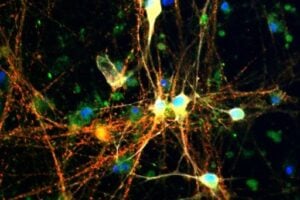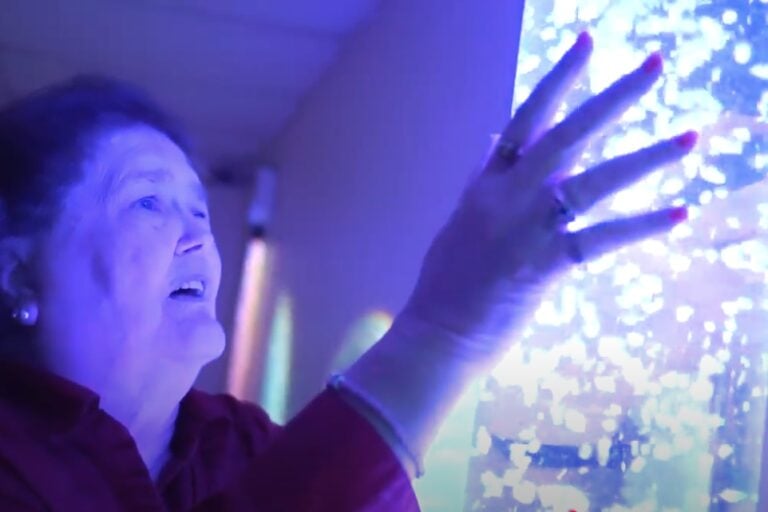VIDEO+ARTICLE
A cutting-edge lab in Cambridge is using human brain cells made in the lab to test experimental Alzheimer’s drugs. See how the use of live human nerve cells is completely transforming our understanding of how to find an Alzheimer’s cure.
A new way of studying Alzheimer’s disease in the laboratory has been developed by scientists at the Wellcome Trust and Cancer Research UK Gurdon Institute in Cambridge and will help researchers understand more clearly how the disease progresses in real life.
The researchers took stem cells created from skin cells donated by volunteers and used them to generate populations of nerve cells that behave just like the cells in a human brain. This model could be used both to follow how Alzheimer’s disease starts and progresses in people and to test and develop potential new treatments for the disease.
Crucially, the cells used were from volunteers with Down’s syndrome. People with Down’s syndrome are at a higher risk of developing Alzheimer’s disease and are often diagnosed with it in middle age; consequently, by using their stem cells, the progression of Alzheimer’s disease can be tracked faster than by using cells from the general population. In the lab, the model develops disease over a matter of months rather than the years or decades that it takes in real life.
Animal models have been used effectively for research into Alzheimer’s disease, but it is difficult to reproduce every aspect of the disease. Using human cells, the new model develops all the hallmarks of Alzheimer’s disease as it appears in patients’ brains studied post-mortem: it shows the same plaques of a protein called amyloid, as well as ‘tangles’ of another protein called tau, and many other characteristic features.
Amyloid is derived from a precursor called APP (amyloid precursor protein), which is controlled by a gene on chromosome 21. People with Down’s syndrome have an extra copy of chromosome 21, which is why they are at greater risk of developing Alzheimer’s disease and of developing it at an earlier age than other people. This also explains why using stem cells from people with Down’s syndrome contributes to the increased rate at which the new model progresses in the lab.
Dr Rick Livesey, who led the study (which was published in ‘Science Translational Medicine’), said: “What is promising about this stem cell technique is that we can create functioning human cortex cells in a dish, allowing us to more closely model what is happening in our brains. Not only this, but our new model shows many of the characteristic features of human Alzheimer’s disease and will allow us to test new treatments more easily.”
SOURCES:
- BBC One
- Wellcome Trust
Image: A confocal image of a brain affected by Alzheimer’s disease, showing a region of amyloid plaque. Credit: Med Mic Sciences Cardiff Uni, Wellcome Images.
Reference
Shi Y et al. A human stem cell model of early Alzheimer’s disease pathology in Down syndrome. Sci Trans Med 2012 (epub ahead of print).











